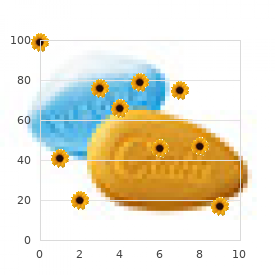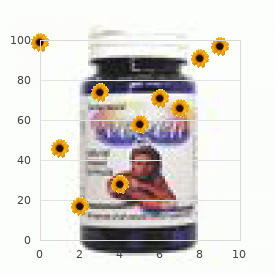"Order generic cefaclor on-line, medicine reminder app".
By: H. Gelford, M.B. B.CH. B.A.O., M.B.B.Ch., Ph.D.
Co-Director, California Health Sciences University
Nailfold capillary microscopy in healthy children and in childhood rheumatic diseases: A prospective single blind observational study medications parkinsons disease cheap 500mg cefaclor. Capillaroscopic observations in childhood rheumatic diseases and healthy controls medicine 503 cefaclor 500mg on-line. The prognostic value of nailfold capillary changes for the development of connective tissue disease in children and adolescents with primary Raynaud phenomenon: A follow-up study of 250 patients symptoms 0f high blood pressure generic cefaclor 500 mg mastercard. Evaluation of nailfold video capillaroscopic abnormalities in patients with systemic lupus erythematosus symptoms nervous breakdown buy generic cefaclor 250mg line. Persistent association of nailfold capillaroscopy changes and skin involvement over thirty-six months with duration of untreated disease in patients with juvenile dermatomyositis. Nailfold capillary density is importantly associated over time with muscle and skin disease activity in juvenile dermatomyositis. Cutaneous findings in sporadic and familial autosomal dominant hyper-IgE syndrome: A retrospective, single-center study of 21 patients diagnosed using molecular analysis. Itraconazole in the treatment of two young brothers with chronic mucocutaneous candidiasis. Downloaded by [Chulalongkorn University (Faculty of Engineering)] at 158 Pediatric Nail Disorders 97. Chronic recurrent multifocal osteomyelitis: Five-year outcomes in 14 pediatric cases. Skin manifestations associated with chronic recurrent multifocal osteomyelitis in a 9-year-old girl. A pruritic linear urticarial rash, fever, and systemic inflammatory disease in five adolescents: Adult-onset still disease or systemic juvenile idiopathic arthritis sine arthritis? Skin disorders affecting human immunodeficiency virusinfected children living in an orphanage in Ethiopia. Onychomadesis after hand-foot-and-mouth disease outbreak in northern Greece: Case series and brief review of the literature. Manifestations of chronic selenium deficiency in a child receiving total parenteral nutrition. Selenium deficiency in children and adolescents nourished by parenteral nutrition and/or selenium-deficient enteral formula. Zinc deficiency and its management in the pediatric population: A literature review and proposed etiologic classification. Congenital insensitivity to pain and anhydrosis: Diagnostic and therapeutic dilemmas revisited. Downloaded by [Chulalongkorn University (Faculty of Engineering)] at Systemic Diseases 159 Downloaded by [Chulalongkorn University (Faculty of Engineering)] at 123. Dermatologic findings in anorexia and bulimia nervosa of childhood and adolescence. Hydroxyurea for sickle cell disease: A systematic review for efficacy and toxicity in children. Cutaneous adverse reactions to hydroxyurea in patients with intermediate thalassemia. A suspected case of trimethoprim-sulfamethoxazoleinduced loss of fingernails and toenails. Based on clinical manifestations, it is possible to divide the porphyrias into three categories: 1. Cutaneous porphyrias with acute phototoxic responses (acute cutaneous syndrome) or skin fragility (subacute cutaneous syndrome). Acute porphyrias characterized by acute abdominal and neurological attacks without cutaneous manifestation. Mixed porphyrias with the possibility of both acute attacks and cutaneous lesions. Pathogenesis Reactive oxygen species, inflammatory mediators, and inflammatory cells have been shown to contribute to the development of cutaneous lesions in porphyrias. Reactive oxygen species and peroxides damage cell membranes, resulting in the release of mediator from the mast cells and also damage hepatic and epidermal microsomal cytochrome P450, as well as lysosomal and mitochondrial membranes.


Assign code 03 if multiagent chemotherapy was administered as first course therapy medications varicose veins discount cefaclor. The planned first course of therapy may or may not have included other agents such as hormone therapy treatment vertigo purchase cefaclor mastercard, immunotherapy symptoms 0f yeast infectiion in women purchase generic cefaclor online, or other treatment in addition to the chemotherapeutic agents medications used to treat ptsd order cefaclor us. Assign code 82 when chemotherapy is a customary option for the primary site/histology but it was not administered due to patient risk factors such as advanced age or comorbid conditions(s) (heart disease, kidney failure, other cancer etc. Assign code 87 if the patient refused the recommended chemotherapy, made a blanket refusal of all recommended treatment, or refused all treatment before any was recommended and chemotherapy is a customary option for the primary site/histology. Assign code 88 when the only information available is that the patient was referred to an oncologist or there was an insertion of a port-a-cath. If follow-up indicates the patient was never seen by the oncologist, change the code to 00. Chemotherapy recommended: A consult recommended chemotherapy, or the attending physician documented that chemotherapy was recommended. Assign code 99 when there is no documentation that chemotherapy was recommended or administered. Chemotherapeutic Agents Chemotherapeutic agents are chemicals that affect cancer tissue by means other than hormonal manipulation. Although they are toxic to all cells, they are most active in the resting phase of the cell. Alkylating agents are used to treat many different cancers including acute and chronic leukemia, lymphoma, Hodgkin disease, multiple myeloma, sarcoma, and cancers of the lung, breast and ovary. Nitrosureas are unique because they can cross the blood-brain barrier and can be used in treating brain tumors Metal salts: Carboplatin, Cisplatin, and Oxaliplatin Antimetabolites Antimetabolites are cell-cycle specific. When the cells incorporate these substances into the cellular metabolism, they are unable to divide. Antimetabolites are classified according to the substances with which they interfere. Plant Alkaloids are cell-cycle specific which means they attack the cells during various phases of division. Antitumor antibiotics are also cell-cycle specific and act during multiple phases of the cell cycle. They are made from natural products and were first produced by the soil fungus Streptomyces. Targeted cancer therapies are sometimes called "molecularly targeted drugs," "molecularly targeted therapies," "precision medicines," or similar names. Examples of molecularly targeted therapy are imatinib (Gleevec), lapatinib (Tykerb), erlotinib (Tarceva), sunitinib (Sutent). Agents in this type of therapy are vastly different from the traditional chemotherapeutic agents. These new drugs are designed to target unique or abnormally-expressed molecules within cancer cells while sparing normal cells. This permits a higher concentration of drug to be in contact with the tumor for a longer period of time. Radioembolization: Embolization combined with the injection of small radioactive beads or coils into an organ or tumor. Use codes 01, 02, 03 as specific information regarding the agent(s) is documented. From a procedure report: Under x-ray guidance, a small catheter is inserted into an artery in the groin. Chemotherapy is injected through the catheter into the tumor and mixed with particles that embolize or block the flow of blood to the tumor. Do not code pre-surgical (pre-operative) embolization of hypervascular tumors with particles, coils or alcohol as a treatment. Pre-surgical embolization is typically performed to prevent excess bleeding during the resection of the primary tumor. Chemotherapy administered as first course of therapy, but the type and number of agents is not documented in the patient record. Chemotherapy was not recommended/administered because it was contraindicated due to patient risk factors i.

Note 3: If counts or percentages of neoplastic cells and clonality test results are available medications 142 buy cefaclor 500mg line, but a B rating is not stated by the physician medications you cant crush cheap cefaclor, the registrar can use the information and assign a B rating and code this data item accordingly medicine 0552 order line cefaclor. Code the terminology used by the physician to describe the plasma cell myeloma from any documentation in the medical record symptoms mold exposure generic cefaclor 250mg visa. If other terminology is used later in the course of the disease to describe more aggressive plasma cell myeloma, do not change the code in the schema discriminator. Coding Instructions and Codes Note 1: Several terms are used to characterize plasma cell myeloma at the time of diagnosis. All these terms are reportable according to the new Hematopoietic and Lymphoid Neoplasms rules effective for cases diagnosed January 1, 2010 and later. Note 4: If diagnosis is plasma cell leukemia variant and is diagnosed concomitant with plasma cell myeloma, code 0. Coding Instructions and Codes Note 1: Physician statement of presence or absence of high-risk cytogenetics can be used to code this data item. Note 2: Record this data item based on a blood test performed at diagnosis (pre-treatment). Hermsen Abstract the sinonasal cavities represent an anatomical region affected by a variety of tumours with clinical, aetiological, pathological, and genetic features distinct from tumours at the main head and neck cancer localizations. Together, squamous-cell carcinoma and adenocarcinoma account for 80% of all sinonasal tumours, and are aetiologically associated with professional exposure to wood and leather dust particles and other industrial compounds, and therefore, are officially recognized as an occupational disease. Owing to their distinctive characteristics, sinonasal tumours should be considered as separate entities, not to be included in the miscellany of head and neck cancers. Sinonasal tumours are rare, with an annual incidence of approximately 1 case per 100,000 inhabitants worldwide, a fact that has hampered molecular-genetic studies of the tumorigenic pathways and the testing of alternative treatment strategies. Nevertheless, the clinical management of sinonasal cancer has improved owing to advances in imaging techniques, endoscopic surgical approaches, and radiotherapy. Genetic profiling and the development of in vitro cell lines and animal models currently form the basis for future targeted anticancer therapies. The sinonasal region is a complex anatomical area, close to structures that include the eyes and the brain, which is of special relevance to surgery and postoperative treatment, as mutilation and aesthetic deformities are difficult to avoid. Epithelial tumours are the predominant form of malignancy affecting the sinonasal cavities, representing >80% of all sinonasal tumours. Indeed, the aetiology, epidemiology, clinical features, and genetic profile of sinonasal tumours are distinct from those of the main head and neck cancer localizations, such as larynx, pharynx, and oral cavity cancers. Thus, sinonasal tumours should be considered unique malignancies not to be included in the miscellany of head and neck cancers. In particular, the advances in endoscopic surgical approaches, radiotherapy and imaging techniques that have improved the clinical management of patients with sinonasal cancer are reviewed. In addition, the progress in genetic profiling and the development of in vitro and animal models of sinonasal cancers, which is laying the foundations for future targeted anticancer therapies, are discussed. The epidemiology of sinonasal tumours Sinonasal cancers comprise 5% of all cancers of the head and neck, with a worldwide incidence of approximately 1 case per 100,000 inhabitants, annually. Proptosis (bulging of the eyes), diplopia (double vision), or neurological symptoms can be present in patients with advanced-stage tumours. Owing to the nonspecific and the often relatively mild nature of the symptoms at early stages of disease, sinonasal malignancies have a prolonged diagnostic latency. Of note, the regions affected by sinonasal tumours are situated close to the eyes and brain. During the follow-up period after treatment of the primary tumour, 10% of patients with sinonasal tumours develop distant metastasis; however, this seldom occurs in absence of locoregional recurrence. Nasofibroscopy can also provide useful data, but the image quality is usually worse than with rigid endoscopes. Noninvasive imaging tests are a b also essential because they enable the complete extent of the tumour to be established and can potentially provide information on the benign or malignant nature of the tumour. Features of malignancy are invasion of soft tissue and the presence of reactive osteogenesis. Erosion of the floor of the maxillary sinus and extension of the tumour into the maxillary alveolus (arrow), buccal space (asterisk), and hard palate (arrowhead) is evident.
Purchase cefaclor without a prescription. FDA Approves First Nonopioid Treatment for Opioid Withdrawal Symptoms.





